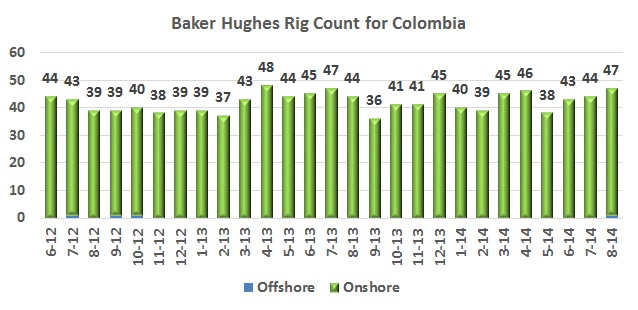President Juan Manuel Santos has announced a series of changes to the approval process for environmental licenses that he says will cut the wait time down to five months but still ensure that the environment is protected.

Nearly four years after announcing the discovery, Ecopetrol (NYSE:EC) has received the environmental license it needs to start more drilling at its Mago-1 well location near Puerto Gaitan, Meta.
Pacific Rubiales (TSX:PRE) has logged a number of achievements in environmental matters with a sustainability certification, a campaign to use production waters for local irrigation; while local press highlights the role of the oil industry in reforestation. In Yopal however, problems surround a damaged pipeline.
A group of environmentalists have delivered a letter to authorities calling for a moratorium on fracking in Colombia until more studies can be performed on its impact on the environment.
The president of the National Hydrocarbons Agency Javier Betancourt Valle defended the process thus far for regulating unconventional oil production, which provides an important potential for new discoveries. He said no fracking would occur for three years, and was surprised by how quick the controversy arose.

The graph shows that Baker Hughes rig counts for Colombia have increased three months in a row, a welcome trend.
Pacific Rubiales says it has made the Down Jones Sustainability index again, while a national paper highlights Corporate Social Responsibility (CSR) projects from oil operators that benefit women and students. These and other CSR related stories in our routine coverage.
Delays in renovating the regulation of rates to transport natural gas has meant US$600M in investments have been delayed while the industry awaited more details over the course of the last five years, says the president of natural gas producer Promigas Antonio Celia Martínez.
Senator Jorge Robledo, a vocal critic of the oil industry, has warned that there could be a possible conspiracy of fuel importers and multinational firms that want to keep the Barrancabermeja Refinery from being modernized.
The count increased to 41 this week, above recent and long-term averages, but the story was a direct attack on the electrical substation of a field.